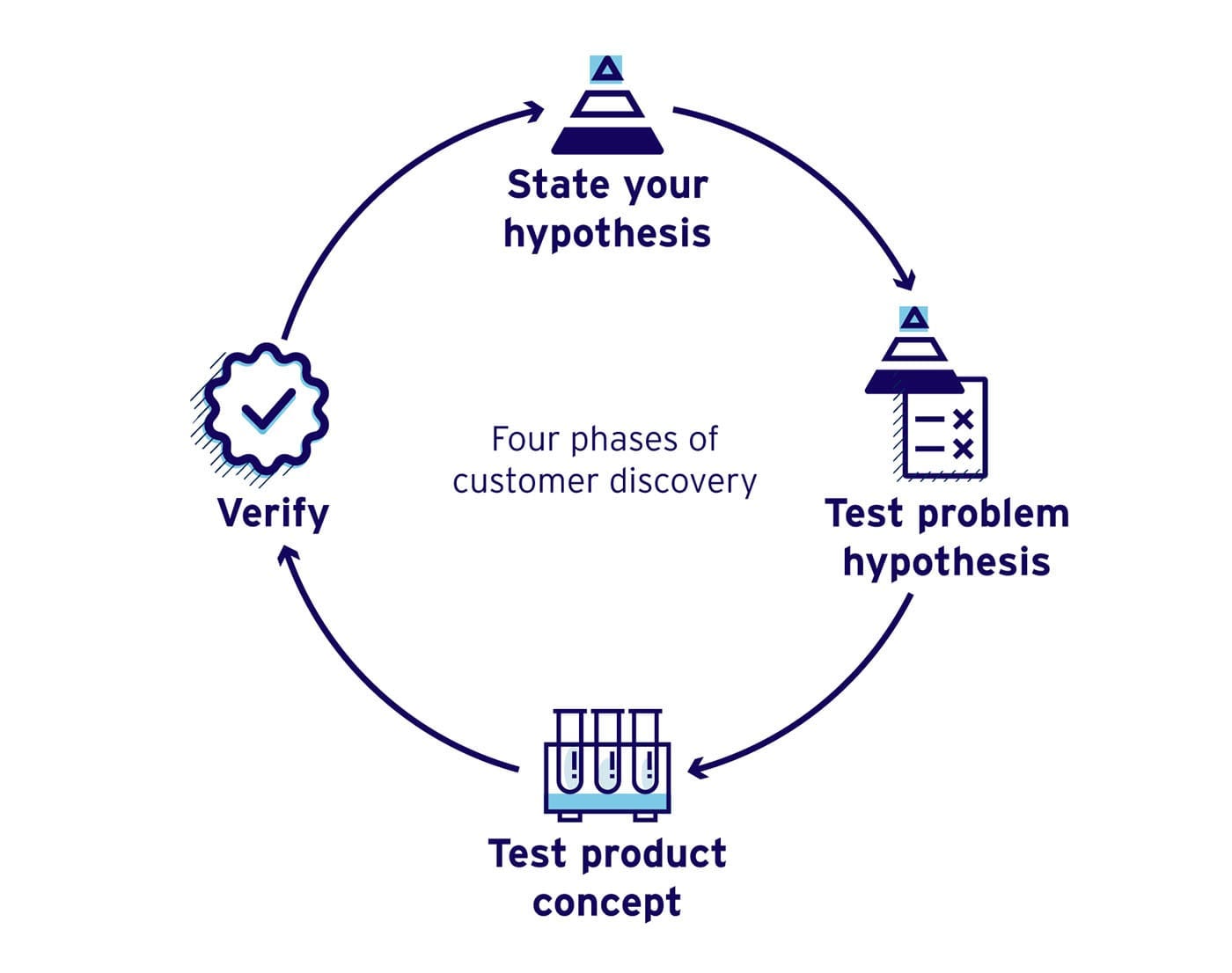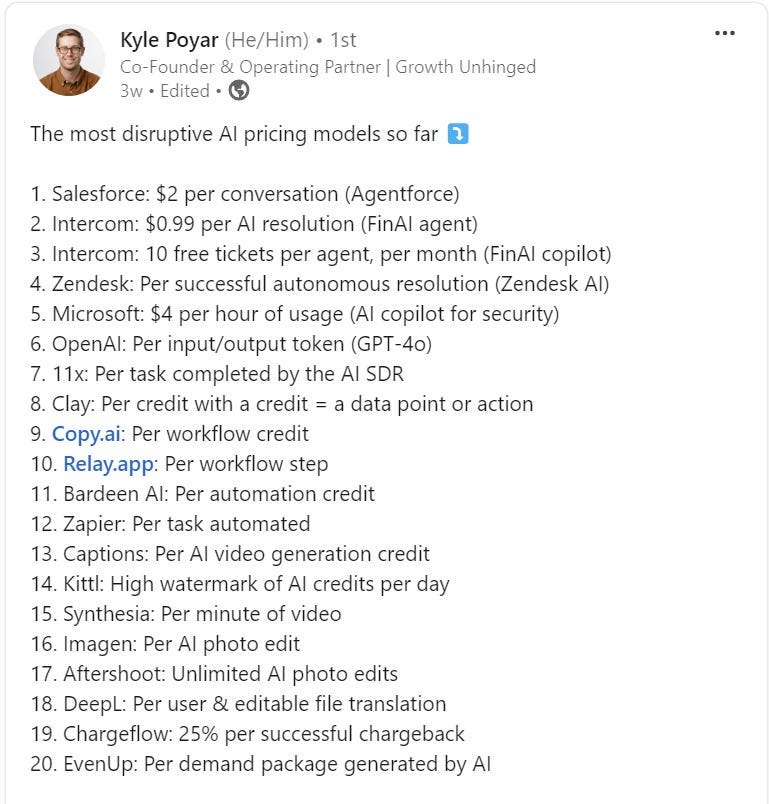If this week’s article does not interest you, please check out some other recent ones:
Venture Capital: the job where failing is a good thing
The mystery of early startup valuations
The Rise of Venture Studios
Introduction
Last month, I realized it would be a great idea to attend the conference to broaden the startup ecosystem. I believe going to panel discussions can offer you valuable insights into market trends and help me stay on track with the fast-moving tech world.
That’s how I discovered an app called Luma, which lists many events around entrepreneurship, tech, crypto, art, and more.
Through Luma, I found a conference hosted by the venture studio Hexa (formerly efounder), featuring Anne-Claire Baschet, Chief of Data and AI Officier of at the French unicorn Mirakl about how Mirakl is building with AI.
For those unfamiliar with Mirakl, it’s a startup co-founded 12 years ago by serial entrepreneurs Philippe Nussembaum and Adrien Corrot.
Mirakl targets a specific paint point for retailers: creating marketplaces as an alternative to Amazon. They provide the engine that powers these marketplaces back-office solutions for well-known retailers such as Decathlon and Maison du Monde, as well as companies in the US, Canada, and Australia. Their service includes a search engine, catalog matching, and overall support and supply capabilities.
During the conference, Anne-Claire Baschet discussed how the emergence of OpenAI’s first model in 2021 created new opportunities for Mirakl especially since they had already been developing their products since 2011. I was curious to learn more about how Mirakl integrated these GenAI technologies into their offering and how they are leveraging them today.
In this article,
Building from scratch
Changing their cycle of product
Using multiple LLMs
The complexity of measuring performance
1. Building from scratch
Key insights :
Early AI Adoption
Focus on Core Value
Rethinking the Core Product
Before the latest wave of generative AI, Mirakl already incorporated AI features using natural language processing for catalog data and form completion. They also developed an assistant to support catalog management and onboarding processes.
Recognizing the promise of generative AI-even though the technology was still in its early stages was one of Mirakl’s best decisions. Instead of focusing on incremental improvements, like upgrading a simple AI assistant or creating a chatbot, they targeted the area where AI could add the most value: catalog onboarding, the core of their business.
The shift required a complete rethink of their approach. Mirakl essentially restarted from their core business, a product they had iterated on for over 12 years challenging and ambitious move sparked by the emergence of single, transformative technology.
2. Changing their cycle of product
Key Insights :
Team Expansion
Ai-First Approach
20 AI Squads
In 2020, Mirakl’s AI division consisted of just six people. By June 2024, it had grown to 30, and by November of the same year, it reached 47 team members. This rapid expansion was led by the company’s founder, Philippe, who recognized the need to evolve Mirakl’s product cycle to effectively integrate generative AI.
Traditionally, Mirakl followed a classic “client → problem → discovery” approach. With GenAI, however, they had to rethink not only who communicates with whom, but also when each team when the team should get involved.
Before GenAI, data scientists used a distinct development process: first, they focused on compiling a robust dataset, then training the algorithm, and finally pushing it to production.
Now by leveraging direct API calls, the team can get results more quickly and iterate faster, shifting toward a more product-centric manager. It became a necessity for Data scientists to learn to adopt product-oriented thinking, while product managers, on the other hand, need to explore different models (e.g. on Hugging Face) to identify the most suitable solutions.
Now Mirakl operates with 20 AI-focused squads, each comprising data engineers, DevOps specialists, and data scientists dedicated to specific features. An AI-first mentality underpins this structure: for every new feature, the team asks, “Can AI add value here?” Rather than inserting AI into everything, they only do so where it truly makes a difference.
If they opt not to use AI for a particular feature, they must justify why it doesn’t add enough value inversion of the usual mindset that ensures AI is adopted meaningfully and strategically.
3. Using multiple LLMs
Key Insights:
No ‘One-Size-Fits-All’
Tooling (NScale, Galileo)
Flexibility & Fine-Tuning
If you’re interested in how Mirakl manages its large language models (LLMs), here’s the rundown: there’s no single “winner takes all.” Instead, they think in terms of individual features. For each feature, they test different LLM models to evaluate both performance and cost-including training expenses and the variability of response times.
Inference: They use NScale
Performance measurement: They rely on Galileo to measure and define performance criteria.
Mirakl typically starts testing with GPT-4, GPT-4 mini, or Mistral AI. However, since they’re deeply involved in building marketplaces, Amazon’s newly released model may be more relevant to certain use cases.
Once they identify a suitable model, they fine-tune it using a combination of retrieval augmented generation (RAG). Rather than fine-tuning a single model, they maintain multiple algorithms to stay flexible across various seller files. They often run a quick test line to see which model performs best, then apply the optimal algorithm to handle all subsequent transformations.
4. The complexity of measuring performance
Key insights:
Time Saved
Revenue Implications
Resource Reallocation
During the conference, I wondered how we measure AI’s impact on business outcomes. performance. How do we determine whether a particular feature drives more revenue? Do we track the number of tasks completed or the time saved? While new AI features can have a clear correlation with revenue, there’s also intangible value to consider.
At Mirakl, one crucial metric is the time saved during catalog onboarding. In a marketplace setting, sellers often need to upload large volumes of products. Shortening that onboarding process translates directly into additional sales weeks and tangible revenue gains. For instance, they reduced the typical 15-day onboarding window to 11 days with AI.
Moreover, automating routine operational tasks frees up the workforce for more strategic responsibilities. By focusing on metrics like efficiency gains, resource reallocation, and time-to-market improvements, Mirakl demonstrates the value of AI beyond mere return on investment.
Moreover, specific operational tasks that don’t need lots of human value could be automated so the workforce can be reallocated to more impactful tasks.
Final Thoughts
From a personal perspective, one of the most remarkable trends today is seeing companies discard their long-established core business in favor of an AI-first approach. It’s crazy to think about throwing away years of iterative refinements and starting anew with AI.
Yet, this shift is becoming increasingly common. Large SaaS providers like Salesforce and Zendesk are moving from traditional per-seat pricing to outcome-based or even fully agent-based pricing. While these bold moves may not yield significant revenue immediately, they’re positioning themselves for what’s to come.
As tech continues to evolve, we may witness more and more companies pivot their core operations toward AI-driven models.
The key question remains: is this the right move, or does it risk taking on too much change, too soon?
Share your thoughts below, I would like to hear your perspective!










Great article - thanks for sharing